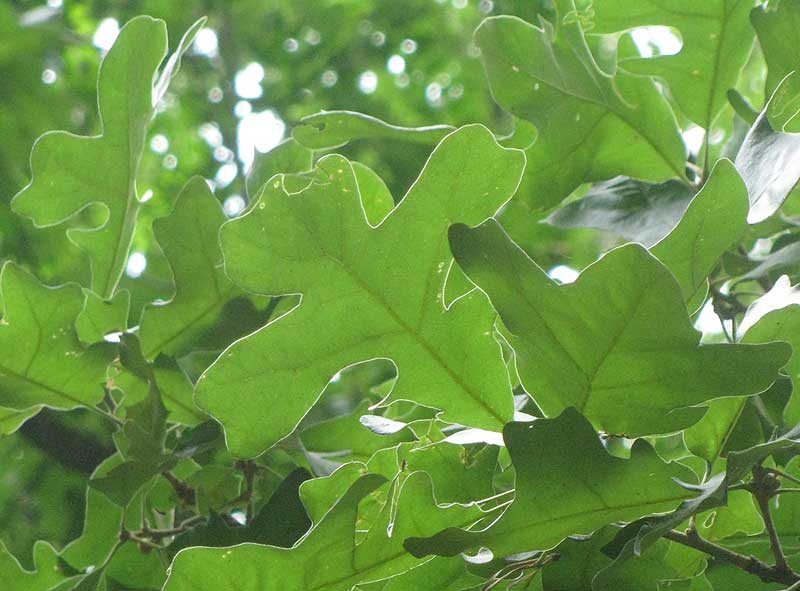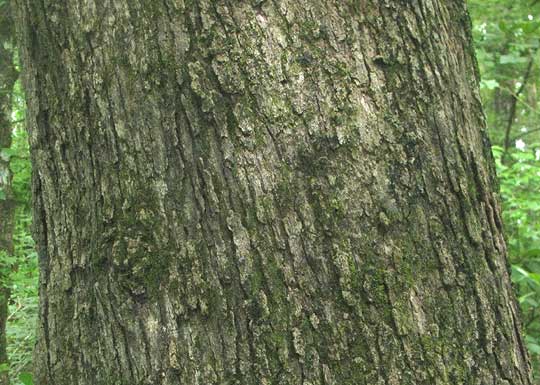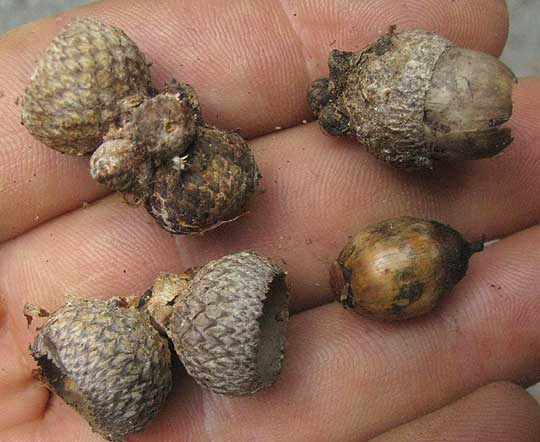Excerpts from Jim Conrad's
Naturalist Newsletter

from the July 8, 2012 Newsletter issued from the woods of the Loess Hill Region a few miles east of Natchez, Mississippi, USA
POST OAK'S DISTINCTIVE LEAVES
The "Mississippi Plants Checklist" on a University of Mississippi Pullen Herbarium page lists 35 oak species -- members of the genus Quercus -- for Mississippi, plus numerous named varieties and hybrids. The list is at http://www.herbarium.olemiss.edu/echecklist.php?genus=Quercus.
Distinguishing these species can be hard. However, this week as I biked down a backcountry road it was clear from a distance which oak species spread its boughs across the road ahead, because of its distinctive cross-shaped leaves. That's them above.
It was the Post Oak, QUERCUS STELLATA, a common species characteristic of dry soil throughout the US Southeast and as far north as southern Iowa and along the coast to southern Massachusetts. Our tree was perched atop a thin ridge of loess with deep ravines on both sides, a classic dry situation. Often Post Oak crowns bear gnarled, twisted branches but this particular tree was rather graceful looking. You can see its gray, scaly bark below:

Last year's smallish acorns, with bowl-like cups covered with light gray, tightly overlapping scales enveloping about half the nut, were hard to find beneath the tree, attesting to their value as food for local wildlife. However, a few were found in the leaf litter, shown below:

The bark of all our oaks contain varying amounts of tannin, which is astringent (puckery) and somewhat antiseptic, and thus traditionally used medicinally by Native Americans. Among the applications listed are for indigestion, chronic dysentery, mouth sores, chapped skin, hoarseness, milky urine, and as a wash for fever and chills.
Post Oak wood has been valued not only for use as posts but also for railroad cross-ties and for construction, often the wood being marketed as "White Oak." Once the tannin has been leached from them, acorns of all oak species can be eaten by humans, usually cooked, made into flour or as a coffee-type drink. The leaching process takes some time. The classic leaching process is to grind them up, put them in a bag and let water run over them for days or weeks. Post Oaks, being members of the White Oak sub-group, produce acorns with less tannin than many species. One webpage on how to make acorns edible is at http://www.eattheweeds.com/nuts-for-acorns/.